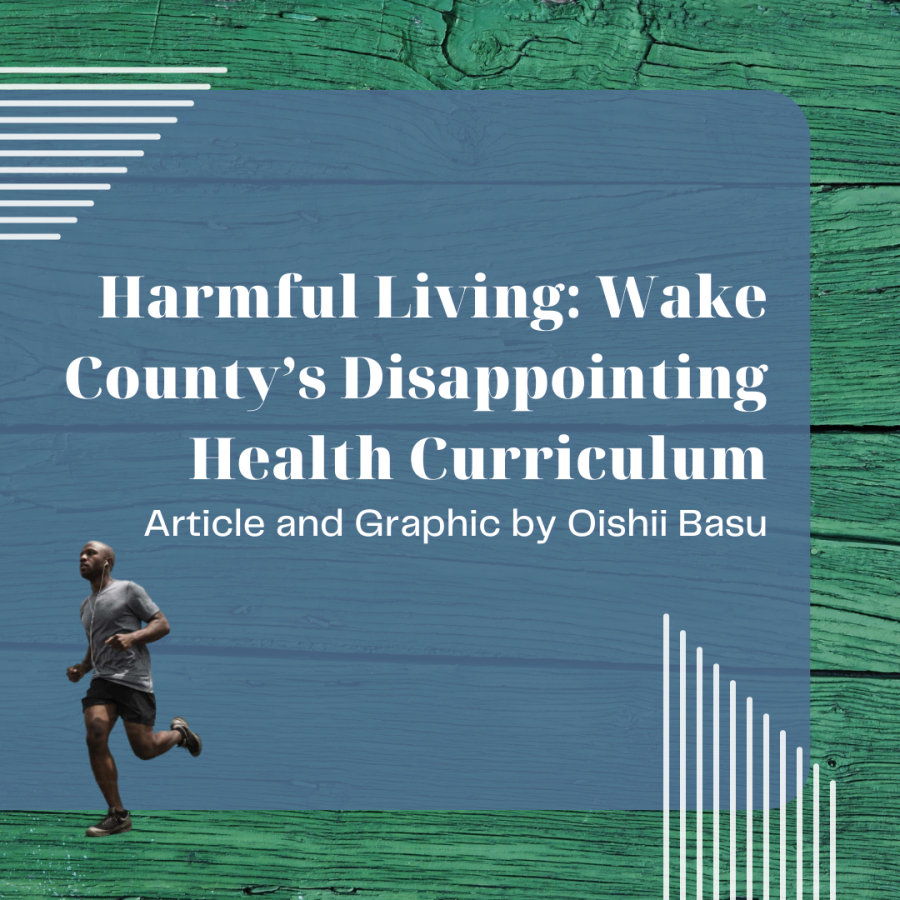Harmful Living: Wake County’s Disappointing Health Curriculum
Content Warning: Eating disorders, Mental illness, Suicide, and Racial Trauma is heavily discussed in the following article.
Healthful Living is the bane of every student’s high school career. You would think this class would be a safe haven for children to learn about their own wellness but for many it has done quite the opposite.
Eating disorders (ED) affect 4% of American teens (approx. 500,000) today (Polaris Teen Center). Although this alarming statistic is acknowledged when addressing ED as a curriculum unit, it is obviously not taken into account during instruction about food. The way we speak about food decides our relationship with it almost irreversibly, but the curriculum still requires students to journal their food and calorie intake. Describing details of how to engage in ED behavior like food journaling are harmful to students and to the scope of ED (National Eating Disorders Collaboration). Setting a non-quantitative dialogue is essential to combatting the onset of ED that are affecting teenagers today. Avoiding measures of calories and weight as well as resources like MyFitnessPal can only be beneficial to the mental and physical health of students. Instead, to enforce healthy self-portioning, suggest objective sizes like a deck of cards worth of protein. Health curriculums should be made to ensure the safest environment for children to learn to care for themselves.
Mental illness drastically affects our students’ age group. From the late 2000s to 2017, cases of Major Depression Disorder (MDD) rose by 69% in American teenagers and the suicide rate for eighteen and nineteen year olds rose by 56% (American Psychology Association). Despite the severity of it all, the curriculum’s grasp on the concept of mental health is minimal at best. According to the North Carolina Department of Instruction (NCDPI) Anxiety is combatable by thinking positively: “By changing one’s negative thoughts to positive ones, such as ‘I can do this,’ young people can improve their self-confidence and come to believe that they can handle a tough situation.” The curriculum’s last update was in 2010, leaving many misinformed instructions in the course. The International OCD Foundation finds that students with anxiety benefit from validation and acceptance, but North Carolina’s entire Mental Health unit is filled with invalidating ableist language (Anxiety In The Classroom). Instruction regarding mental illness should not place the blame solely on individuals with mental illnesses, as it isn’t a cognitive choice.
Personal health is essential to the objective of Healthful Living but it’s taught in a marginalizing manner. One of the first principles introduced only outlines the benefits of organ donation, saying: “Many people believe that a doctor will not work as hard to save someone’s life if that person is an organ donor.” People of color (PoC) often choose not to be organ donors because of a general mistrust in the healthcare system. This mistrust is not misplaced, as disparities between results for PoC and their white counterparts are devastating. Black Americans are three times more likely to die during childbirth than white Americans (Centers for Disease Control and Prevention). To create a safe space for racially-marginalized students Wake County should introduce Critical Race Theory in regards to the American healthcare system.
As any class should, Healthful Living should provide a non-threatening environment for students to learn, but as a required class it should provide efficacy in the methods and concepts it teaches students. Health is meant to teach students how to maintain themselves physically and mentally as they become more independent and accrue more responsibilities. As is, this tone-deaf curriculum is doing much more harm than help.

(She/her)
A. Oishii Basu is the A&E editor on the Eagle's Eye. Outside of Newspaper, she enjoys making art, curating playlists and hanging out with...











